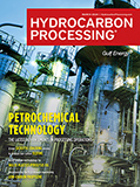Environment & Safety
Red Sea, Russian refinery attacks tighten Asia naphtha supplies
Prices of naphtha, a key petrochemical feedstock, have jumped in Asia as drone attacks on Russian refineries and the Red Sea shipping crisis have disrupted European shipment.
Russia's Ilsky refinery plans to restart damaged unit this week
Russia's export-oriented Ilsky oil refinery plans to resume operations at its damaged primary processing unit this week.
Ukrainian drones attack two oil refineries in southern Russia
Ukrainian drones attacked two oil refineries in southern Russia's Krasnodar region, causing a large fire at the Ilsky refinery during operations conducted by the SBU security service.
Japan's Cosmo expects around 90% refinery run rate in 2024-25
Japanese oil company Cosmo Energy Holdings expects its refinery run rate to hover around 90% in the business year starting in April as it plans maintenance shutdowns at its Chiba and Yokkaichi sites.
TotalEnergies no longer sending ships through Red Sea
TotalEnergies has not sent ships through the southern strait leading to the Red Sea and the Suez Canal for several weeks, extending its ships' travel time to Europe, the French oil major said.
Venezuela to begin 20-day maintenance at smallest refinery
Venezuela has received all the parts it needs to begin a maintenance program at the 146,000-bpd El Palito refinery, with work expected to take about 20 days.
Russia's Tuapse oil refinery will not resume operations this month
Rosneft-owned Tuapse oil refinery on the Black Sea will not resume operations this month, at the very least.
Ukraine hits Russia's Volgograd oil refinery in latest drone attack
Two Ukrainian attack drones struck the largest oil refinery in southern Russia in the latest in a series of long-range attacks on Russian oil facilities.
Sugar Valley Energy bio-refinery to address SAF market
Valley Energy, a new 160-acre bioenergy campus planned in California’s Imperial Valley, intends to produce SAF for the airline industry.
SOCAR ships Azeri BTC oil to Thailand via Cape of Good Hope
Azerbaijan's state oil company SOCAR is shipping Azeri BTC oil to Thailand via Africa's Cape of Good Hope to avoid the Red Sea.

- India receives fuel oil cargo in Russian SCF tanker after brief halt 4/26
- Biden administration (U.S.) to release SAF tax credit model 4/26
- Boeing, Wagner advance Australia’s SAF Industry 4/26
- S-Oil expects Q2 refining margins to remain steady then trend upward 4/26
- Vitol to charter supertankers from U.S. to Nigeria's Dangote refinery 4/26
- Refiner Valero beats profit estimates on resilient demand, tight supplies 4/26




